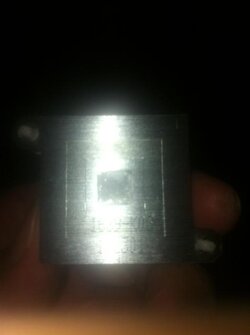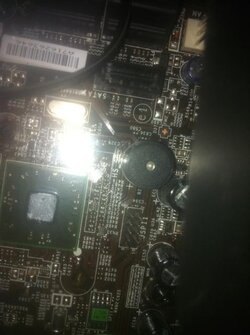Hi guys,
I'm new to posting but have been lurking for a while. I have a problem I need help with. So I bought the arctic adhesive because I was trying to reattach the heatsink for my southbridge: one of the legs was not secure anymore. While I was waiting for the epoxy to cure (having a weight on it), I guess the weight slipped and the heatsink slipped and was not making contact anymore. I was not in the room so I didn't realize when this happened. Now I have two surfaces (the chip and the heatsink) not bonded together both with the epoxy (with good position though). What should I do? Should I try to clean the epoxy off and try to start over. If I do, how do I get off the adhesive? I have the arctic cleaner set that gets rid of thermal grease. Will it work for this material? If not, should I just try to apply more adhesive and try to rework the bond? Again, the two surfaces are not bonded so I don't need to worry about getting them apart. I WANT to get that bond. Thanks so much guys!!!!
I'm new to posting but have been lurking for a while. I have a problem I need help with. So I bought the arctic adhesive because I was trying to reattach the heatsink for my southbridge: one of the legs was not secure anymore. While I was waiting for the epoxy to cure (having a weight on it), I guess the weight slipped and the heatsink slipped and was not making contact anymore. I was not in the room so I didn't realize when this happened. Now I have two surfaces (the chip and the heatsink) not bonded together both with the epoxy (with good position though). What should I do? Should I try to clean the epoxy off and try to start over. If I do, how do I get off the adhesive? I have the arctic cleaner set that gets rid of thermal grease. Will it work for this material? If not, should I just try to apply more adhesive and try to rework the bond? Again, the two surfaces are not bonded so I don't need to worry about getting them apart. I WANT to get that bond. Thanks so much guys!!!!

